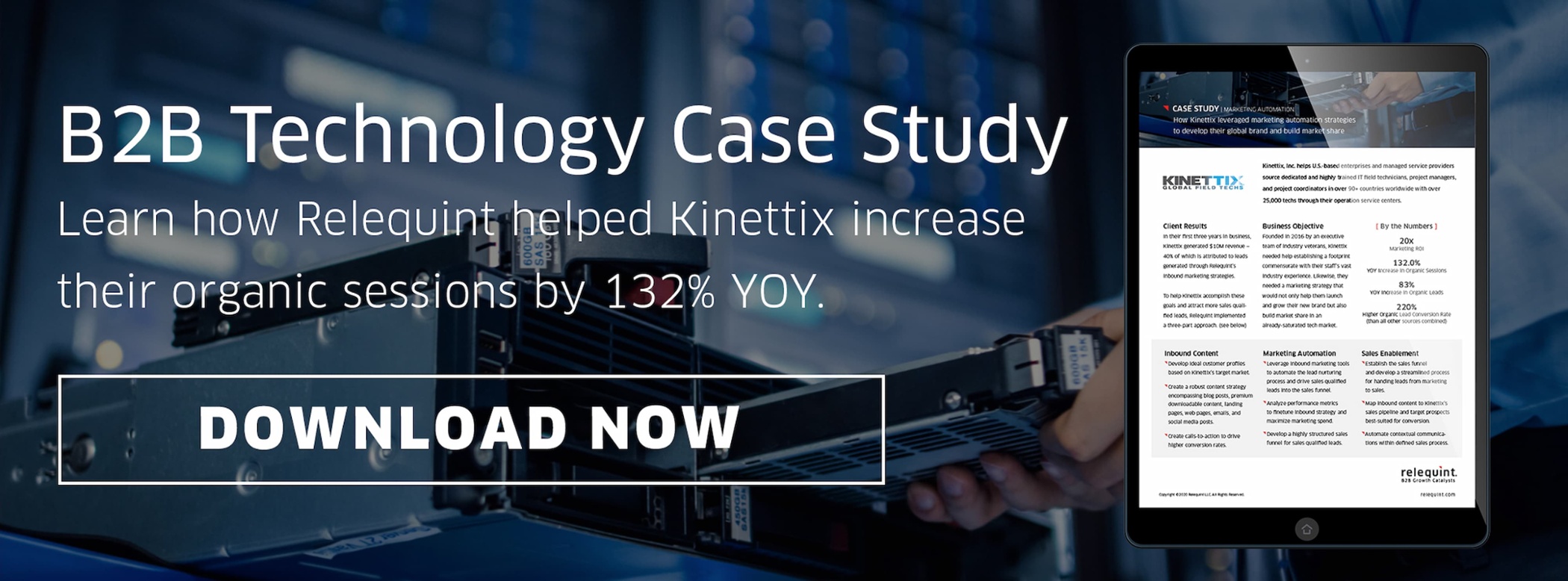 From personalization to automation, there are many components that can affect the health of your B2B marketing strategy. However, if your technology company’s goal is to generate leads and achieve growth, then you need to consider these two factors: attribution and distribution.
From personalization to automation, there are many components that can affect the health of your B2B marketing strategy. However, if your technology company’s goal is to generate leads and achieve growth, then you need to consider these two factors: attribution and distribution.
Let’s discuss each in detail and determine why they’re so important for B2B tech companies.
Marketing Attribution
What Is Marketing Attribution?
The goal of marketing attribution is to understand all the different touch points a prospect came in contact with as well as all the different interactions they had with your company throughout the buyer’s journey.
With this knowledge, you can identify which specific marketing messages helped convert the individual from a prospect to a lead and from a lead to a customer. It is these areas that are worth investing more time and money to promote future conversions and strive for a better customer acquisition cost.
Why is Marketing Attribution Important for B2B Technology Companies?
You probably already have an idea of the types of people that your B2B tech company’s services most appeal to, along with the factors that motivate them to buy. While this information is crucial for sales and marketing alignment, a buyer persona is an idealized version of your target customer.
You also need to understand the specific steps real buyers took before deciding to make a purchase. Through marketing attribution, you’ll see where the customer came from, how they found your company, and all of the interaction they had before making that final decision.
This information will give you measurable insights about which marketing strategies are working — and which aren’t. In turn, you’ll have a better idea of where to specifically concentrate your department’s time, money, and effort.
How Does Marketing Attribution Work?
There are touch points at every stage of the buyer's journey, starting with no-risk offers like following a company on social media or signing up for a newsletter to more direct offers like a demo or consultation.
To accurately measure which touch points a prospect interacted with and then track their behaviors from that first interaction through the point of sale, you should leverage a CRM like HubSpot or Pardot. These systems offer comprehensive analytics to help you track the customer journey and prove ROI.
In addition to using a CRM, you will also need to:
- Set up conversion tracking and pixels for your webpages and social media channels.
- Come up with a UTM tagging and tracking system that consistently provides complete data through your lead's journey.
- Understand how different attribution models provide insights that will help you make sound marketing decisions.
Distribution Channels
What Are Distribution Channels?
Like attribution, distribution channels are a cornerstone of effective B2B marketing. Distribution channels refer to where your ideal customers are and, in turn, where you focus your marketing efforts.
When used correctly, distribution channels can help you expand your customer reach and increase your overall revenue. Some of the distribution channels most commonly used for B2B technology companies include:
- Direct internet sales
- Direct sales through a sales team
- Through consultants
- Through sales agents
How to Effectively Set Up Distribution Channels
Creating the right type of distribution program requires research into your end-users and their unique wants and needs. You’ll need to choose channels that fit in with how your customer prefers their information to be delivered. Ask yourself:
- Where do your customers prefer to make their purchases?
- Which distribution channels are currently working for you?
- Which distribution channels are your competitors using?
- Do prospects require personalized education or training?
Today, an internet presence is always a must. Additionally, customers seeking B2B technology services likely need education beyond what’s on your website. Thus, leveraging a direct sales team is an effective way to not only educate prospects but also forge one-on-one relationships.
Your company might rely on different distribution channels, though. Take your time answering these questions and consult a professional if necessary.
How to Drive Revenue Through Your Distribution Channels
Once you’ve established your distribution channels, it’s time to drive revenue through them via marketing campaigns. These campaigns will look different depending on how your company is structured. For example, some of the most effective ways to drive leads through internet distribution channels include email marketing, SEO, and social media.
Knowing which distribution channels are working best for your business will not only help you structure your marketing campaigns but also more effectively target your ideal customers and achieve measurable results.
Analyzing marketing attribution and using the proper distribution channels can increase lead generation, providing your B2B technology company the tools needed to drive revenue and increase ROI. ![]()







 By
By 
